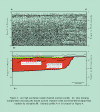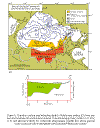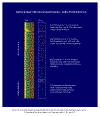
|
||||||||||||
|
| The
Lake Pontchartrain Basin is a 12,170-km2 watershed in
southeastern Louisiana, stretching from the State of Mississippi on the north and east to
the Mississippi River on the west and south, and to Breton Sound at the Gulf of Mexico.
The Pontchartrain Basin is about 200 km along strike and 75 km along dip, with modern lakes
(Maurepas, Pontchartrain, and Borgne) covering the southern portion of the basin. Lake
Pontchartrain and its adjacent lakes form one of the largest estuaries in the United
States. Nearly 1.5 million people (one-third of the entire population of Louisiana) live
in the 14 parishes of the Lake Pontchartrain Basin.
Incised Pleistocene terraces bound the basin to the north, the Mississippi River delta plain to the south-southwest, and the Chandeleur Islands to the south-southeast. Over the last 150 years, urban growth of New Orleans and the north shore communities and associated exploitation of natural resources have severely altered the environmental quality of the basin. In 1994, the USGS began a multidisciplinary evaluation of the geology, geomorphology, coastal processes, and environmental quality of the Pontchartrain Basin for use by Federal, State and local officials in coastal management and restoration planning. Existing geological information has been integrated with newly acquired bathymetry, high-resolution seismic and sonar profiles, vibracores, boxcores, and geochemical data to develop a geologic history and record of sediment distribution of the basin (fig. 1, fig. 2). The Pontchartrain Basin has a complex depositional history, a result of sedimentary processes controlled by sea-level change. During the late Wisconsin lowstand, the region was entrenched by rivers. A buried incised channel of the ancestral Mississippi River, identified from seismic profiles (see fig. 3, A-A’ ), underlies the southern margin of Lake Pontchartrain. The incision is 3 to 4 km across, was cut to a depth of 40 m, and can be traced from west to east into Lake Pontchartrain (fig. 4). Sea-level rise during deglaciation truncated the filled paleochannel and the surrounding region of the Pontchartrain Basin. The ravinement surface is a sharp contact with siderite nodules and has been identified from vibracores and boring and interpreted from seismic profiles as the Pleistocene-Holocene contact (fig. 5, fig. 6, fig. 7). The late Pleistocene unit is typically described as a stiff, olive-gray to light grayish-yellow clay that is highly bioturbated. The burrows are filled with oxidized organics or sand and silt. The structure contour map (fig. 4) of the Pleistocene surface shows the contact is shallow (near the sediment surface, 2 m below sea level) in northeast Lake Pontchartrain and deeper (20 m below sea level) to the southwest. Cross section A-A’ (fig. 4) illustrates how the Pleistocene contact crops out along the northeast shore and dips to the southwest. Due in part to structure of the Pleistocene surface and in part to deltaic deposition from the Mississippi River, Holocene sedimentation has occurred in at least five episodes. Holocene sediments in Lake Pontchartrain were differentially deposited to the north (~0.3 m thick; fig. 5 and fig. 8) and south (~5.0 m thick). Of the five episodes, two were not extensive and could not be mapped, but three units above the Pleistocene-Holocene contact have been delineated (fig. 7). As the basin flooded, the first sediment unit began to accumulate in topographic lows in the west-central part of the lake near the Mississippi River (fig. 4). The oldest Holocene unit (B2, thickness of 2.0+ m, fig. 5) is described as soft gray clay sporadically interbedded with fine sand, horizontal laminations, isolated lenticular bedding, sand-filled burrows, and rafted organics. Unit B2 is completely burrowed. Unit B1 overlies unit B2 and is composed of a soft, silty, fine sand interbedded with clay and (or) clay clastics, shell fragments, and small rafted organics (coffee grounds). Unit B1 averages 1.0 m thick. The uppermost unit in the section, A1 (>1.0 m thick), is a burrowed, soft dark gray to grayish-brown clay with massive bedding containing small shells and shell fragments. Unit A1 is possibly a disturbed zone as a result of heavy commercial shell dredge activity from the 1930's to 1990. Each of these units has sharp basal contact. Units A1 and B1 have the largest areal distribution. Sea-level rise flooded the "Pontchartrain Embayment" between 6,000 to 4,000 B.P. (fig. 9) and deposited transgressive nearshore or lagoonal/estuarine sediments across the area over the ravinement surface. A stillstand at ~4,000 B.P. initiated formation of a barrier shoreline. Sediments eroding from Pleistocene terraces and Pearl River delta shores to the east of the Pontchartrain Embayment, combined with sandy material moving westward along the Alabama-Mississippi shore, built the large recurved spit and barrier (Pine Island Barrier Trend; fig 10) that bounds the southeast part of the basin. Back-barrier deposits and shell reefs partially filled the open estuary. The next depositional event (at ~3,000 B.P.) was the eastward progradation of the St. Bernard delta complex and other subdeltas from the Mississippi River valley. Deltaic sediments enclosed the Pontchartrain Basin to the south and eventually covered the Pine Island Barrier, forming Lake Pontchartrain. At that time, the basin began to accumulate prodelta, delta front, and crevasse deposits. Cypress swamps and freshwater marshes formed in the upper basin and intermediate to saline marshes formed in the lower basin. From ~3,000 B.P. to the present, active growth faults have also influenced basin geometry and geomorphology, particularly along the north shore. Although the depositional history is complex, sea-level change has controlled the development of estuaries in the northern Gulf of Mexico (fig. 11). Many similarities exist among the gulf estuaries. The same processes that formed and flooded the incised valleys of Mobile Bay to the east and Sabine Lake to the west formed Lake Pontchartrain. Each of these estuaries was an open bay that was closed or partially closed by westward movement of shoreline sands that formed spits or cheniers. Mobile Bay was partially closed by sands forming Morgan Peninsula. Sabine Lake was fully closed by the sands forming the chenier plain of western Louisiana. Lake Pontchartrain was partially closed by sands forming the Pine Island Barrier Trend. The embayment was then fully cut off by Mississippi River subdeltaic deposition. Evolution of each of these bays is linked by the processes that have formed them. |
|
Figure 2 |
|
Figure 3 |
|
Figure 4 |
|
Figure 5 |
|
Figure 6 |
|
Figure 7 |
|
Figure 8 |
|
Figure 9 |
|
Figure 10 |
|
Figure 11 |
References
Dunbar, J.B., Blaes, M.R., Dueitt, S.E., May, J.R., 1995, Geological investigation of the Mississippi River deltaic plain: Vicksburg, MS, U.S. Army Corps of Engineers, Waterways Experiment Station, Technical Report GL-84-15.
Kindinger, J.L., Williams, S.J., Penland, Shea, Flocks, J.G., and Connor, P.F., 1997, Holocene geologic framework of Lake Pontchartrain Basin and lakes of southeastern Louisiana: Gulf Coast Association of Geological Societies, Transactions of the 47th Annual Convention, extended abstract, vol. XLVII, p. 635-638.
Saucier, R.T., 1963, Recent geomorphic history of the Pontchartrain Basin: Baton Rouge, LA, Louisiana State University Press, 114 p.
______1994, Geomorphology and quaternary geologic history of the Lower Mississippi Valley: Vicksburg, MS, U.S. Army Corps of Engineers, Waterways Experiment Station, vol. 1, 364 p.
